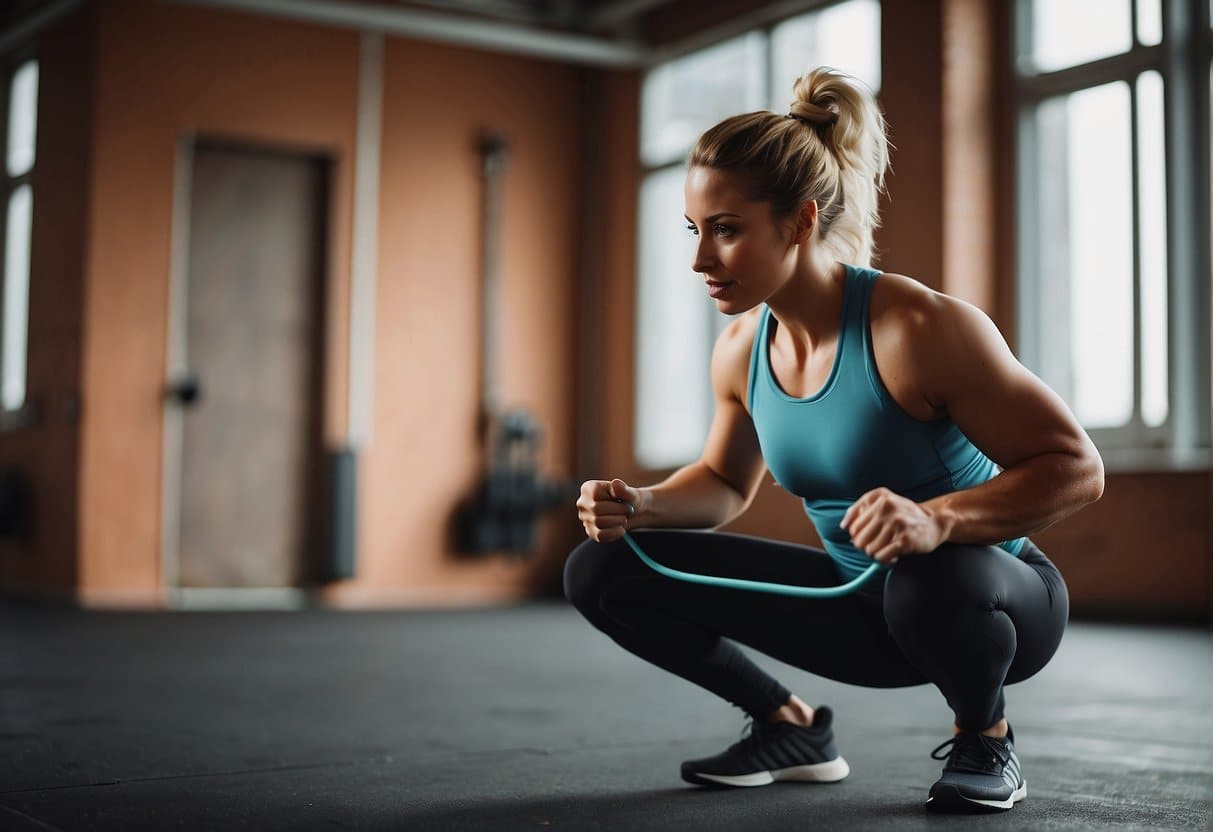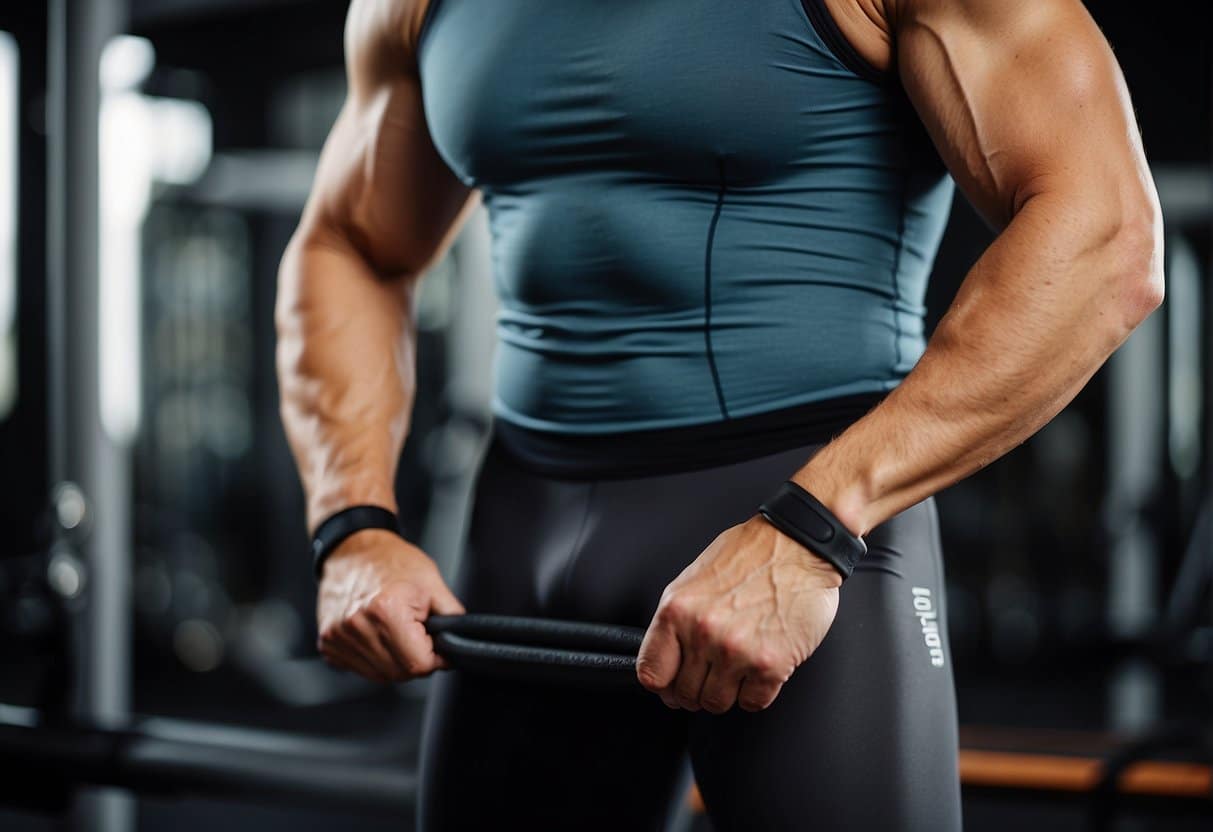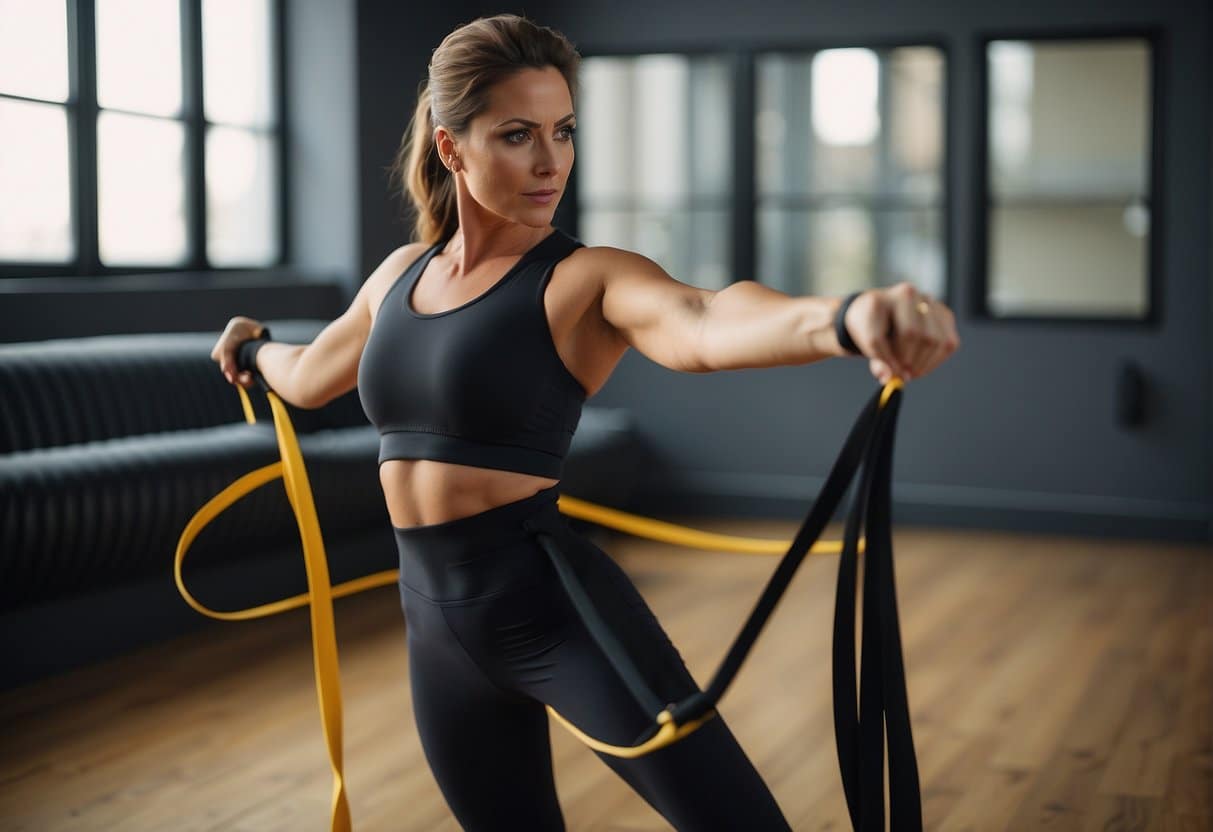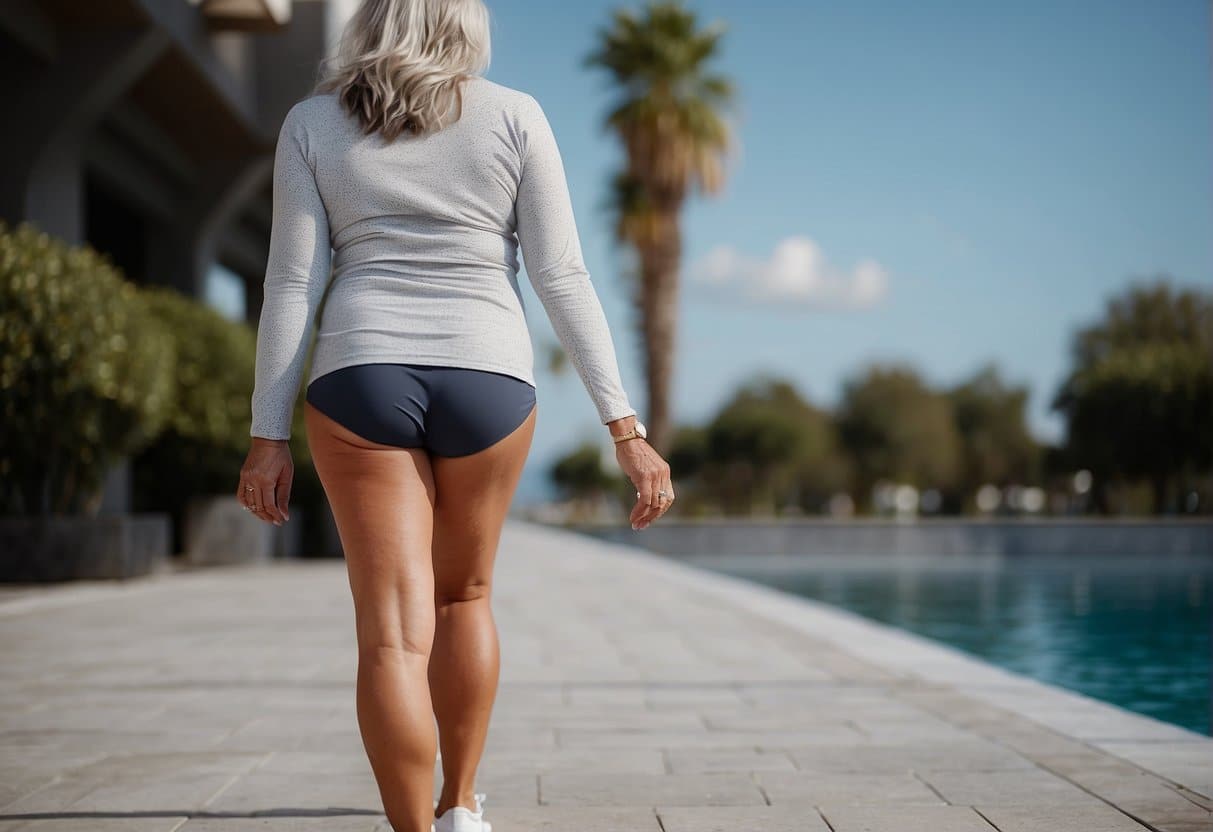As we age, our bodies naturally change. One of the most noticeable changes is the loss of muscle mass and tone, especially in the glutes. This can result in a flatter, less shapely butt, which can be frustrating and impact our self-confidence. But fear not, there are ways how to make your booty round again after 50.

Understanding the aging process is key to understanding why our butts change shape as we get older. As we age, our bodies produce less collagen and elastin, which are essential for keeping our skin firm and elastic. This loss of elasticity can cause our skin to sag, including in the buttocks. Additionally, our muscles naturally weaken over time, which can result in a flatter, less defined butt.
Fundamentals of butt-shaping include exercises that target the glutes, such as squats, lunges, and hip thrusts. But there are also other factors to consider, such as diet, hydration, and sleep.
How to Make Your Booty Round Again
Understanding the Aging Process

As we age, our bodies undergo various changes that can impact our muscle tone and shape. In this section, I will discuss the biological changes that occur after 50 and their impact on muscle tone and shape.
Biological Changes After 50
After the age of 50, our bodies undergo several biological changes that can contribute to a loss of muscle tone and shape in the buttocks. These changes include a decrease in the production of hormones such as estrogen and testosterone, which can lead to a loss of muscle mass and an increase in body fat. Additionally, the body’s ability to absorb and utilize nutrients such as protein decreases with age, which can further contribute to muscle loss.
Impact on Muscle Tone and Shape
The loss of muscle tone and shape in the buttocks can lead to a sagging or flat appearance. This can be exacerbated by a sedentary lifestyle, which can cause further muscle loss and a decrease in overall fitness. Additionally, excess body fat can accumulate in the buttocks area, further contributing to a loss of shape and tone.
To combat these effects, it is important to engage in regular exercise and maintain a healthy diet.
Fundamentals of Butt-Shaping

As we age, our bodies undergo various changes, and one of the most noticeable changes is the loss of muscle mass. This is especially true for the gluteal muscles, which are responsible for giving our butts their shape. Fortunately, there are ways to combat this loss and regain a rounder, firmer butt.
Importance of Gluteal Muscles
The gluteal muscles are the largest and most powerful muscles in the body. They are responsible for stabilizing the pelvis, supporting the lower back, and providing power and strength to the legs. As we age, these muscles tend to weaken, which can lead to a flatter, sagging butt. Therefore, it is important to target these muscles with specific exercises to keep them firm.
Role of Diet in Shaping Your Butt
Diet plays a crucial role in shaping your butt. To build and maintain muscle mass, you need to consume enough protein. Aim for at least 0.8 grams of protein per pound of body weight per day.
Additionally, make sure to eat a balanced diet that includes plenty of fruits, vegetables, and whole grains. Avoid processed foods and excess sugar, as they can lead to weight gain and fat accumulation in the butt area.
Effective Exercise Regimen
To shape your butt, you need to target the gluteal muscles with specific exercises. Squats, lunges, and deadlifts are all effective exercises that work the glutes. Additionally, incorporating resistance bands or weights can help increase the intensity of your workouts.
Aim for at least two to three strength training sessions per week, and make sure to give your muscles time to rest and recover between workouts.
Top 10 Tips for a Rounder Butt

As we age, our bodies change, and one of the most noticeable changes is the loss of muscle mass. This is especially true for the glutes, which can lead to a flat or saggy butt. However, with the right strategies, you can make your butt round again after 50. Here are 10 tips to help you achieve a rounder butt:
Strength Training Strategies
- Incorporate compound exercises: Compound exercises, such as squats, deadlifts, and lunges, work multiple muscle groups, including the glutes. Aim to do these exercises at least twice a week.
- Use resistance bands: Resistance bands are a great way to add extra resistance to your workouts and target the glutes. Try incorporating exercises like banded squats and banded hip thrusts into your routine.
- Focus on progressive overload: To build muscle, you need to challenge your body with progressively heavier weights or resistance. Keep track of your progress and aim to increase your weights or resistance over time.
Cardiovascular Activities
- Incorporate high-intensity interval training (HIIT): HIIT workouts are a great way to burn fat and build muscle. Try incorporating exercises like jumping jacks, burpees, and mountain climbers into your routine.
- Add incline walking to your routine: Incline walking is a great low-impact cardiovascular exercise that targets the glutes. Try walking on a treadmill or hiking up hills to target your glutes.
Consistency and Patience
- Be consistent with your workouts: Consistency is key when it comes to building muscle. Aim to work out at least three times a week and stick to your routine.
- Be patient: Building muscle takes time, especially as we age. Don’t get discouraged if you don’t see results right away. Stick to your routine and be patient.
- Get enough rest: Rest is just as important as exercise when it comes to building muscle. Aim to get at least seven to eight hours of sleep a night and take rest days when needed.
Things to Avoid
- Avoid sitting for long periods.
Sitting for long periods can lead to weak glutes and a flat butt.
Try to stand up and move around every 30 minutes to keep your glutes active.
- Avoid overtraining.
Overtraining can lead to injury and hinder your progress.
Listen to your body and take rest days when needed.
FAQ
My butt type is V-shape. What exercise can I do to make it rounder?
To transform a V-shaped butt into a rounder shape, focus on exercises that build muscle in your glutes.
Try squats, hip thrusts, and glute bridges.
Incorporate lunges and deadlifts for overall lower body strength.
Do these exercises three to four times a week.
Increase the weight gradually to challenge your muscles.
Consistency and proper nutrition are key for noticeable changes.
Are there any non-surgical methods to enhance buttock shape?
Yes, besides exercise, consider treatments like vacuum therapy or radiofrequency therapy.
These can stimulate muscle and tighten skin.
Wearing supportive garments can also help shape your buttocks.
Consult a professional for advice.
How long does it take to see results in buttock shape?
Results vary but with consistent exercise and proper diet, you might see changes in 3 to 6 months.
Patience is important.
Track your progress with photos.
Stay motivated by setting realistic goals.
Can losing weight affect the shape of my buttocks?
Yes, losing weight can change your buttocks’ shape.
When you lose fat, it can decrease in size and may sag.
Focus on strength training to maintain roundness.
This builds muscle and keeps your buttocks firm.
Are there specific foods that help in regaining a round buttock?
Yes, eating protein-rich foods like chicken, fish, beans, and eggs can help.
These foods support muscle growth in your buttocks.
Combine with vegetables and whole grains for balance.
Stay hydrated and avoid processed foods.
How can I regain a round buttock through exercise?
To get a rounder buttock, focus on exercises like squats, lunges, and deadlifts.
These target your glute muscles.
Do them three times a week.
Add weights to increase the challenge.
Consistency is key for results.
Do I need to use weights to improve the shape of my butt?
No, you don’t necessarily need to use weights to improve the shape of your butt.
Bodyweight exercises can also be very effective in building muscle and improving the appearance of your buttocks.
Exercises like squats, lunges, glute bridges, and step-ups can be done without any equipment.
To increase the challenge, you can use your body weight, focus on higher repetitions, and perform the exercises slowly to increase tension on the muscles.
Incorporating variations and progressively challenging your muscles by changing the routine can also help.
However, adding weights over time can further enhance muscle growth and definition.
Is swimming good for shaping booty?
Yes, swimming is good for shaping your booty.
It’s a full-body workout that engages the glute muscles.
Different strokes, like the butterfly and freestyle, can target your lower body.
Kicking movements in the water provide resistance, which helps tone and strengthen the glutes.
For more focused results, try using a kickboard to emphasize leg and buttock muscles.
Swimming also improves overall fitness, which can contribute to a more toned appearance.

Claudia Faucher is a full-time fitness training expert and lifestyle blogger. She is also been a certified Les Mills BodyPump instructor for the past 5 years and a fitness instructor for over 20 years. Claudia is a personal trainer and creates fitness training programs for seniors and people of all ages. She likes to use her skills and experiences to help others on their fitness journeys.
